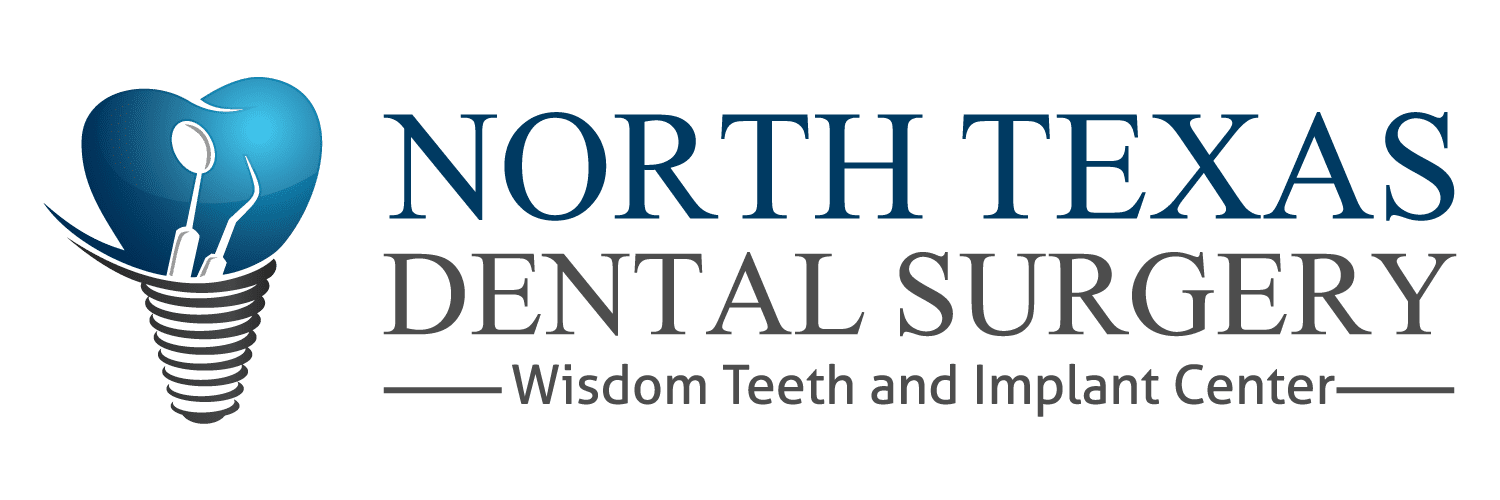Have you been told you need a sinus lift in order to qualify for your dental implant? Our experienced Board-Certified Surgeon of over 10 years is here to answer all your questions today.
Why is 3D Imaging Important?
During your consultation, a 3Dscan image will be taken of your mouth. This 3D scan allows the surgeon to see exactly how much bone is located in the maxilla. The technology gives the surgeon an insight into the quantity of bone and the location of any nerves or arteries. Knowing this information is pertinent to avoid major surgical complications. Trying to perform a successful sinus lift procedure without this technology is a guessing game. As you see below this is a patient’s maxillary bone levels in the maxillary sinus before treatment and after treatment.
Before Sinus Lift Surgery
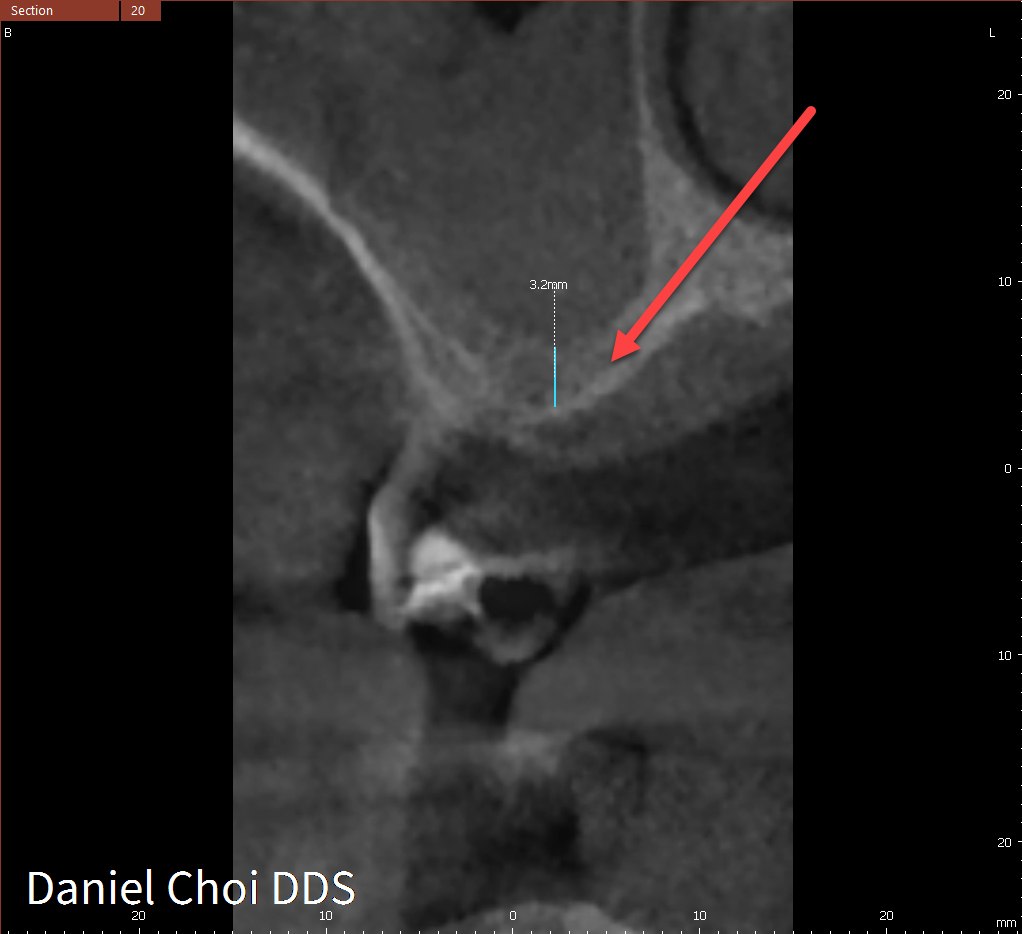
After Sinus Lift Surgery
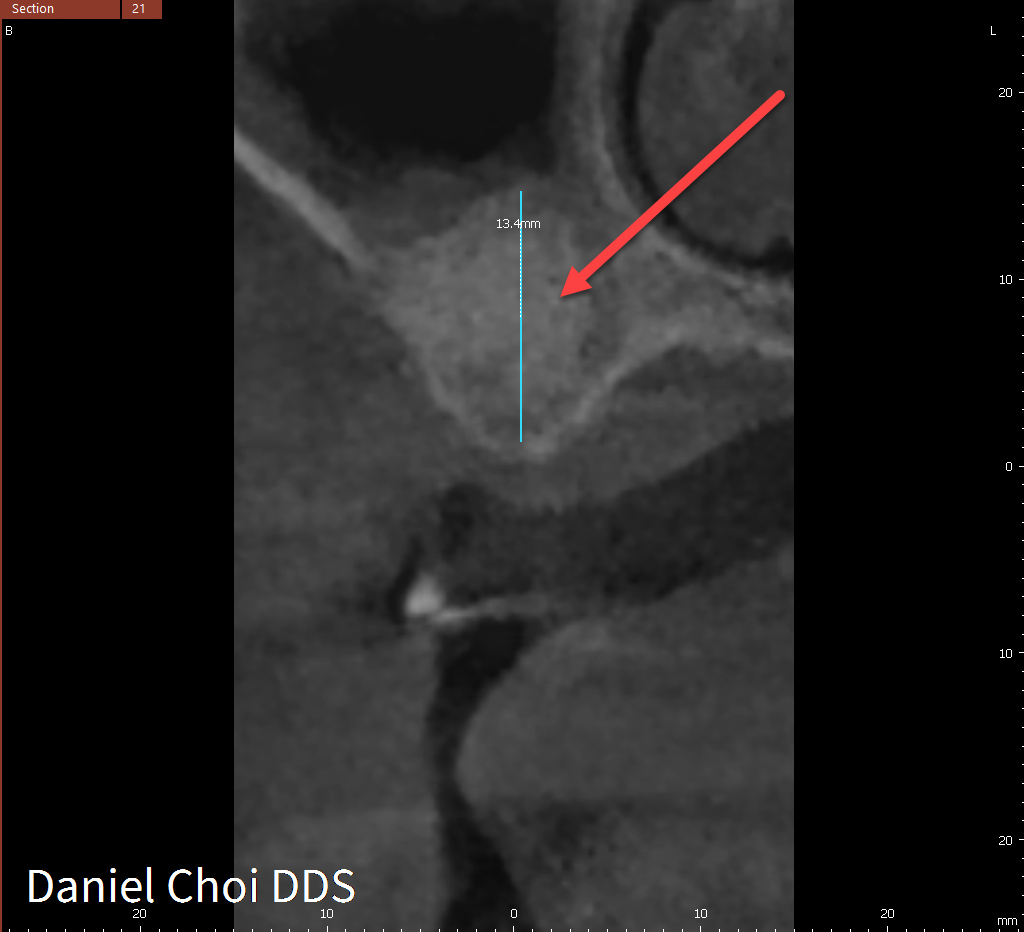
What is a Dental Implant?
A dental implant is a titanium screw that replicates a root to anchor in a screw-retained crown, that allows you to replace a missing tooth or multiple teeth. Dental implants are the most innovative technology on the market to replace missing teeth. This procedure can be performed under local anesthesia or IV sedation, varying on the patient’s level of comfort. In order for a dental implant to be stable, sometimes bone grafting may be necessary. This can be performed at the time of extraction or at the time of implant placement. Bone grafting is needed to aid in supporting the implant if there isn’t enough bone available. Once the implant is placed it will need time to osseointegrate, which means allowing the titanium implant to bond to the bone. After the implant has fully healed, a custom crown and abutment will be made. An abutment will screw into your implant, then the crown will be either screwed into the abutment or be cemented on top depending on the tooth. This will now be your new permanent tooth.
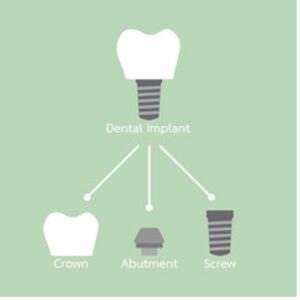
What is a Sinus Lift?
Sinus lift procedures are performed when patients have an inadequacy of bone in the maxillary region due to a low sinus cavity. Sinuses are air-filled cavities within a bone that make it difficult for a dental implant to have solid retention. The surgical specialist will lift the sinus membrane and fill the air space with bone. The surgeon will determine which bone is best suited for the success of your treatment. Performing a sinus lift will create a firm anchor of support for the future dental implant. Dental Implants must have this solid foundation to be successful.
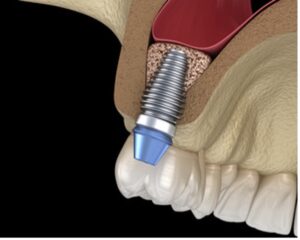
Sinus Lift Procedure
A low sinus makes it complicated to place an implant in an air-filled space. Sinus lift procedures can be either performed under IV sedation or local anesthesia. There are two types of sinus lift procedures, a sinus bump or lateral window lift.
A sinus bump surgery will start with the surgeon making an incision along the gumline of the treatment area. Once the sinus floor is accessed and the sinus is visible, the membrane will be lifted. The sinus membrane will continue to be slowly lifted until the necessary height is reached.
A lateral window lift entails a surgeon making a slight incision on the side of the sinus wall. This cut gives your specialist access to the inferior zygoma bone, which will then be shaved down to reveal the Schneiderian membrane. The membrane will be lifted laterally and superiorly to create room for the new bone.
In both procedures after each membrane is lifted, the space is filled with bone grafting material. A protective material called a membrane will be placed on top of your bone graft to ensure it is secured in place. Additionally, the area will then be sutured closed by your surgeon.
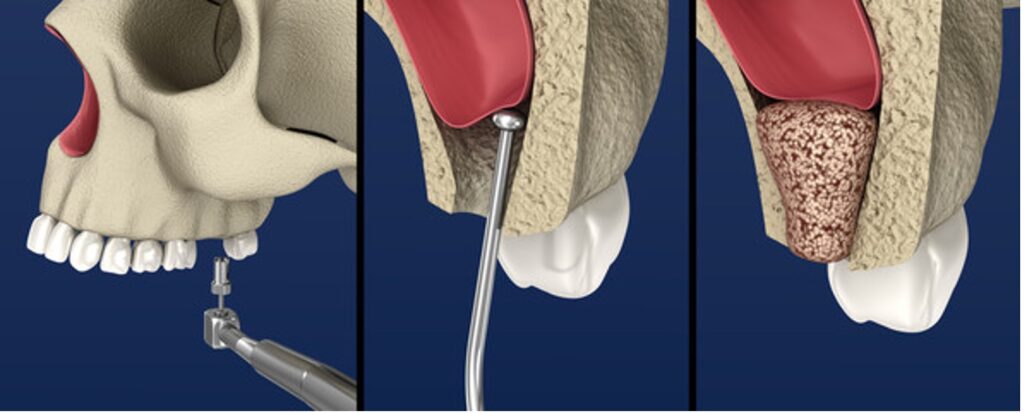
Sinus Lift Recovery
The treatment area will take 4-6 months to heal before an implant can be placed. Proper post-operative care is important for a successful outcome. In certain cases, there is sufficient bone to perform the sinus lift and place the implant at the same time.
Do NOT blow your nose after treatment for any reason. When sneezing, try your best to not hold it in, but let it come out naturally. If you do have a runny nose, you can pat it dry with a tissue. Disruption to the sinus is not ideal for a successful recovery. DO NOT SMOKE OR VAPE. Smoking or vaping can cause the sinus lift to fail, due to the toxic chemicals being inhaled into the sinus cavity. Ice packs and sleeping with your head elevated tend to help with any post-operative swelling. Take your antibiotics as prescribed, to avoid any infections that could arise after surgery. Take pain medication as need. Also, avoid excessive activity for at least 3 days following treatment.
HYGIENE:
Do not brush your teeth in the surgical area, use mouth wash, or floss for 24 hours following your treatment. After this time, you may resume normal hygiene patterns, but avoid any disruption to the treatment area. Warm salt water rinses are imperative for 2 weeks after treatment to promote healing. Do not swish but gently rinse and lightly spit. Bleeding following treatment should be minimal. If bleeding does occur, take a damp piece of gauze and apply light pressure to the area until the bleeding subsides. The gauze can be applied for 20 minutes and changed every 45 minutes.
DIET:
A liquid diet is suggested for the first few days, followed by a soft diet. No straws or carbonated beverages are advised, to avoid disrupting the site. Avoid little seeds or grains, that could get stuck in the treatment area. After the first week, normal eating habits can be continued but avoid eating in the surgical area for at least 4-6 months.
Sinus Lift Cost in McKinney Plano and Grapevine Texas
The cost of a sinus lift can range anywhere from $2,000 to $4,000. This cost can fluctuate depending on the patient’s insurance provider or lack thereof. Additionally, if IV sedation or extractions are needed, this increases the price. When a patient is spending this much money, it is important to choose a surgical specialist who will get the job done right.
Sinus Lift Complications
A sinus lift surgery has a relatively low surgical risk if your surgeon is well versed in the procedure. However, just like any surgical treatment, there could be some major complications if not performed correctly. One surgical complication consists of bleeding from the maxillary artery. If the posterior superior alveolar artery is penetrated, extensive bleeding is known to occur. To avoid this surgical complication, the surgeon can use the 3D CBCT to properly plan the procedure. Another surgical complication associated with a sinus lift surgery is a torn or perforated sinus (Schneiderian) membrane. The sinus membrane is a tissue-thin layer and is easily punctured. When the sinus membrane is penetrated the surgeon must repair it immediately or abort the surgery. If not, it can increase the risk for postoperative infections and decrease the chance of a successful implant. Another post-surgical complication that can be seen is an infection. Signs of a sinus infection are increased swelling, tenderness, bleeding, pus, fever, nasal discharge with a bad smell, and metallic taste or smell. This is usually noticeable starting at least 4 days after the procedure. Any sort of swelling in the first few days is typical and is most likely not an infection. Figuring out what caused the infection is a major factor in determining how to resolve it. The first step of action is giving an antibiotic to fight the infection. Augmentin is an antibiotic best used to resolve sinus infections. If the patient is allergic to Augmentin, Z-Pack or Levaquin can be given as an alternative. To fix a sinus infection that antibiotics can’t control, surgery is the next option. The site will have to be reopened and completely cleaned out then closed. This is the last resort option because the patient will have to heal, and the surgery will have to be reperformed in at least 4-5 months. This is why it is always important to get your treatment performed by a specialist who has years of experience.
If you need a sinus lift or have been told you don’t qualify for a dental implant in the maxillary region, come see us today! Let our surgical specialist guide you down the right path to a new smile. Locations in McKinney, Plano, and Grapevine Texas.
